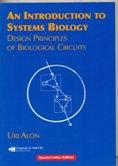
|
INTRODUCTION TO SYSTEMS BIOLOGY, Indian Reprint 2018 - URI ALON |
|
|
Cover Price : Rs 1,995.00
|
Imprint : T & F / Routledge
ISBN : 9781498770903
YOP : 2018
|
Binding : Paperback
Total Pages : 416
CD : No
|
|
"...Alon boldly articulates the basic principles underlying biological circuitry at different levels and shows how powerful they can be in understanding the complexity of living cells. For anyone who wants to understand how a living cell works, but thought they never would, this book is essential."
—Michael B. Elowitz, California Institute of Technology, Pasadena, USA
"This is a remarkable book that introduces not only a field but a way of thinking....Alon’s clear intuitive language and helpful examples offer — even to a mathematically naive reader — deep mathematical insights into biology. The community has been waiting for this book; it was worth the wait."
—Galit Lahav, Harvard Medical School, Boston, USA
"Uri Alon offers a highly original perspective on systems biology, emphasizing the function of certain simple networks that appear as ubiquitous building blocks of living matter. The quest for simplicity — without losing contact with complex reality — is the only way to uncover the principles organizing biological systems. Alon writes with uncommon lucidity…"
—Boris Shraiman, University of California, Santa Barbara, USA
An Introduction to Systems Biology: Design Principles of Biological Circuits builds a solid foundation for the intuitive understanding of general principles. It encourages the reader to askwhy a system is designed in a particular way and then proceeds to answer with simplified models.
Features
• Explains the elementary circuits in transcription regulation, signal transduction, and developmental networks
• Examines the principle of robustness
• Details how evolutionary optimization can be used to understand optimal circuit design
• Considers how kinetic proofreading and other mechanisms can minimize errors in biological information processing
• Includes exercises, solved problems, and appendices with background material
Contents
INTRODUCTION
TRANSCRIPTION NETWORKS, BASIC CONCEPTS
AUTO-REGULATION, A NETWORK MOTIF
THE FEEDFORWARD LOOP NETWORK MOTIF
TEMPORAL PROGRAMS AND THE GLOBAL STRUCTURE OF TRANSCRIPTION NETWORKS
NETWORK MOTIFS IN DEVELOPMENTAL, SIGNAL-TRANSDUCTION AND NEURONAL NETWORKS
ROBUSTNESS OF PROTEIN CIRCUITS, THE EXAMPLE OF BACTERIAL CHEMOTAXIS
ROBUST PATTERNING IN DEVELOPMENT
KINETIC PROOFREADING
OPTIMAL GENE CIRCUIT DESIGN
RULES FOR GENE REGULATION BASED ON ERROR MINIMIZATION
EPILOGUE: Simplicity in Biology
APPENDIX A: The Input-Function of a Gene, Michaelis-Menten and Hill Equations
APPENDIX B: Multi-Dimensional Input-Functions
APPENDIX C: Graph Properties of Transcription Networks
APPENDIX D: Cell-Cell Variability in Gene Expression
GLOSSARY
BIBLIOGRAPHY
Professor Uri Alon is at the Weizmann Institute of Science, Rehovot, Israel.
|
|
 |
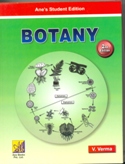
|
Botany, 2nd ed - V. Verma |
|
|
Cover Price : Rs 550.00
|
Imprint : Ane Books Pvt. Ltd.
ISBN : 9789382127086
YOP : 2015
|
Binding : Paperback
Total Pages : 1084
CD : No
|
|
About the Book :-
The present book is an attempt to provide a detailed account of different branches of botany for the students of degree classes, plus II classes and also for those who are appearing in different competitive examinations.
The subject-matter of the book has been well supplemented with high quality and adequately labelled illustrations. A new chapter on Mutation has been added along with an appendix giving latest information about the regulation of gene activity.
Contents :-
Unit I-Plant Kingdom : 1.Biological Classification; 2.Viruses; 3.Monera (Bacteria); 4.Monera (Cyanobacteria); 5.Protista; 6.Algae ;7.Fungi; 8.Lichens; 9.Bryophyta; 10.Pteridophyta; 11.Gymnosperms; Unit II-Angiosperms :-12.The Reproduction of Flowering Plants; Unit III-Morphology 13.Vegetative Morphology; 14.Reproductive Morphology; Unit IV-Systematics 15.Systematics; Unit V-Plant Anatomy 16.Plant Anatomy;Unit VI-Cell Biology 17.The Cell:The Basic Unit of Life;Unit VII-Genetics 18.Mendel and His Laws of Inheritance; 19.Structure and Function of Genetic Material; 20.Plant Breeding and Crop Improvement; 21.Genetic Engineering, Cloning and Genomics;Unit VIII-Plant Physiology :-22.Plant Water Relations; 23.Absorption of Water; 24.Ascent of SAP; 25.Transpiration; 26.Mineral Nutrition; 27.Photosynthesis; 28.Translocation of Organic Solutes; 29.Respiration; 30.Nitrogen Metabolism; 31.Growth and Growth Hormones; 32.Physiology of Flowering; 33.Plant Movements; Unit IX-Ecology :-34.Organisms and Environment; 35.Biotic Community and Plant Succession; 36.Ecosystem; 37.Biodiversity and Conservation; 38.Natural Resources;39.Environmental Pollution; Unit X-Economic Botany :-40.Plants of Economic Importance; Unit XI-Origin of Life :-41.Origin of Life; Unit XII-Organic Evolution :-42.Evidences and Theories of Organic Evolution;43. Mutation, Appendix, Index.
About the Author :-
Dr.V.Verma is an aluminus of some very illustrious Institutions of India, namely, K.P.Inter College, Allahabad, Ewing Christian College, Allahabad, University of Allahabad and University of Delhi for more than forty years. His books, numbering about a dozen, have been widely appreciated by students and teachers of undergraduate as well as postgraduate classes of all Indian Universities. His books have been written in a very lucid style and in an easily understandable language. After retiring from Delhi University, he has joined Amity Institute for Competitive Examinations as Professor and Head of the Botany Department.
|
|
 |
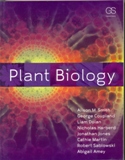
|
Plant Biology |
Author |
Alison M. Smith
George Coupland
Liam Dolan
Nicholas Harberd
|
|
Cover Price : £ 65.00
|
Imprint : Garland Science
ISBN : 9780815340256
YOP : 2010
|
Binding : Paperback
Total Pages : 680
CD : No
|
|
About the Book:
The sunlight that is captured by photosynthetic organisms is the energy source that ultimately fuels almost all of the lift on earth. Plants are by far the predominant land-based photosynthetic organisms, and provide the energy that supports almost all of earth’s ecosystem. An understanding of the biology of plants is therefore one of the most important goals of contemporary science, a goal that becomes increasingly pressing as human-generated changes in the earth’s environment threaten ecosystem stability.
Plant Biology is a ‘where we are now’ account of plant science. It acknowledges the distinguished history of the subject, but its approach is strongly influenced by the radically new outlook that has emerged in the last twenty years. Many of the recent advances in plant biology the author describe are useful in the understanding of modern biology as a whole.
Contents:
Chapter 1: Origins
Chapter 2: Genomes
Chapter 3: Cells
Chapter 4: Metabolism
Chapter 5: Development
Chapter 6: Environmental Signals
Chapter 7: Environmental Stress
Chapter 8: Interactions with other Organisms
Chapter 9: Domestication and Agriculture
|
|
 |
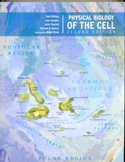
|
Physical Biology of the Cell, 2nd ed. |
Author |
Rob Phillips
Jane Kondev
Julie Theriot
Hernan G. Garcia
|
|
Cover Price : £ 80.00
|
Imprint : Garland Science
ISBN : 9780815344506
YOP : 2013
|
Binding : Paperback
Total Pages : 1088
CD : No
|
|
Physical Biology of the Cell maps the huge and complex landscape of cell and molecular biology from the distinct perspective of physical biology. As a key organizing principle, the proximity of topics is based on the physical concepts that unite a given set of biological phenomena. Herein lies the central premise: that the appropriate application of a few fundamental physical models ca n serve as the foundation of whole bodies of quantitative biological intuition, useful across a wide range of biological problems. The Second Edition features full-color illustrations throughout, two new chapters on the role of light in life and pattern formation, additional explorations of biological problems using computation, and significantly more end-of-chapter problems. This textbook is written for a first course in physical biology or biophysics for undergraduate or graduate students.
Contents.
Preface
Acknowledgments
Special Sections
Map of the Maps
Part I The Facts of Life
1. Why: Biology By the Numbers
2. What and Where: Construction Plans for Cells and Organisms
3. When: Stopwatches at Many Scales
4. Who: "Bless the Little Beasties"
Part II Life at Rest
5. Mechanical and Chemical Equilibrium in the Living Cell
6. Entropy Rules!
7. Two-State Systems: From Ion Channels to Cooperative Binding
8. Random Walks and the Structure of Macromolecules
9. Electrostatics for Salty Solutions
10. Beam Theory: Architecture for Cells and Skeletons
11. Biological Membranes: Life in Two Dimensions
Part III Life in Motion
12. The Mathematics of Water
13. A Statistical View of Biological Dynamics
14. Life in Crowded and Disordered Environments
15. Rate Equations and Dynamics in the Cell
16. Dynamics of Molecular Motors
17. Biological Electricity and the Hodgkin-Huxley Model
18. Light and Life
Part IV The Meaning of Life
19. Organization of Biological Networks
20. Biological Patterns: Order in Space and Time
21. Sequences, Specificity and Evolution
22. Whither Physical Biology?
Index
|
|
 |
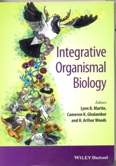
|
Integrative Organismal Biology - Lynn B.Martin |
Author |
Lynn B. Martin
Cameron K. Ghalambor
H. Arthur Woods
|
|
Cover Price : $ 129.95
|
Imprint : Wiley
ISBN : 9781118398784
YOP : 2015
|
Binding : Paperback
Total Pages : 354
CD : No
|
|
Integrative Organismal Biology synthesizes current understanding of the causes and consequences of individual variation at the physiological, behavioral and organismal levels. Emphasizing key topics such as phenotypic plasticity and flexibility, and summarizing emerging areas such as ecological immunology, oxidative stress biology and others, Integrative Organismal Biology pulls together information across a multitude of disciplines to provide a synthetic understanding of the role of the individual in evolution.
Beginning with grounding theory highlighting the role of the individual in evolutionary and ecological processes, the book covers theory and mechanism from both classic and modern perspectives. Chapters explore concepts such as how genetic and epigenetic variation becomes physiological and phenotypic variation, homeostasis, gene regulatory networks, physiological regulatory networks. A concluding section illustrates these concepts through a series of case studies of life processes such as aging, reproduction, and immune defense.
Written and edited by leaders in the field, Integrative Organismal Biology is an important advanced textbook for students and researchers across a variety of subdisciplines of integrative biology.
-Unique focus on how genetic and environmental variation in individuals mediates physiological and phenotypic variation
- Emphasizes hot topics including phenotypic plasticity and flexibility, physiological complexity, ecological immunology, and oxidative stress biology
- Covers eco-evolutionary theory and mechanism from both classic and modern perspectives
- Written and edited by leaders in the field
Contents
Acknowledgments
Notes on Contributors
1 PLASTICITY, COMPLEXITY, AND THE INDIVIDUAL
Cameron K. Ghalambor, Lynn B. Martin, and H. Arthur Woods
Introduction
Bridging the Conceptual Divide
Integrative Organismal Biology: Progress to Date
Phenotypic Plasticity: The Link between Individuals, Environments, and Evolution
The Problem of Complexity
Embracing the Individual and the Union of Functional and Evolutionary Biology
Conclusion
References
2 THE ECOLOGICAL AND EVOLUTIONARY IMPORTANCE OF VARIATION IN LIFE HISTORY REACTION NORMS
Daniel H. Nussey
Introduction
The Reaction Norm Approach and Individual by Environment Interactions (I × E)
Why Do Reaction Norms Vary?
Causes and Consequences of Variation in Avian Phenological Plasticity
Integrating Field and Laboratory Studies of Life History Plasticity
The Challenges Ahead
References
3 CURVE-THINKING: UNDERSTANDING REACTION NORMS AND DEVELOPMENTAL TRAJECTORIES AS TRAITS
Joel Kingsolver, Sarah Diamond, and Richard Gomulkiewicz
Introduction
Characterizing Curves
Variation among Curves
Simplicity and Biological Hypotheses
Summary and Future Directions
Acknowledgments
References
4 PLASTICITY AND PERSONALITY
Kimberley J. Mathot and Niels J. Dingemanse
Animal Personality: Moving beyond Optimality and Embracing Individual Differences
Individual Differences in Behavioral Plasticity
Personality-Related Differences in Plasticity
Adaptive Explanations for Personality-Related Differences in Plasticity
Ecological and Evolutionary Implications of Personality and Plasticity
Genetic and Environmental Underpinnings
Designs to Study Personality-Related Differences in Plasticity
Conclusions and Future Directions
References
5 INDUCTION AND FUNCTION OF POLYPHENIC MORPHS: PROXIMATE REGULATORY MECHANISMS AND EVOLUTIONARY IMPLICATIONS
Anthony J. Zera and Jennifer A. Brisson
Introduction
Background on Endocrinology and Gene Regulation
Case Studies
Summary and Future Directions
Acknowledgments
References
6 EVOLUTIONARY SYSTEMS BIOLOGY: SHIFTING FOCUS TO THE CONTEXT-DEPENDENCY OF GENETIC EFFECTS
Mihaela Pavli¡cev and Günter P. Wagner
Introduction
Two Ends of the Spectrum in Evolutionary Biology
Context-Dependency in Population Genetics: Epistasis
Genetic Effects Structured by Development: Pleiotropy
What Are the Consequences of Context-Dependency?
Generalizing SPC Model: Interaction of Gene Effects, or Effects of Interactions?
Conclusion
References
7 THE ROLE OF ECOLOGICAL EPIGENETICS IN INTEGRATIVE BIOLOGY
Aaron W. Schrey, Joshua Banta, Holly J. Kilvitis, and Christina L. Richards
Introduction
Ecological Epigenetics
Case Study: Arabidopsis Thaliana
Conclusion
References
8 AN ELEPHANT IN THE FOG: UNIFYING CONCEPTS OF PHYSIOLOGICAL STASIS AND CHANGE
H. Arthur Woods and J. Keaton Wilson
Introduction
Elaborations of Stasis and Change
Axes of (Dis)similarity
Constructing a Conceptual Elephant
Unification Diffuses Concepts and Tools
Costs and Constraints
Conclusion
Acknowledgments
References
9 PHYSIOLOGICAL REGULATORY NETWORKS: THE ORCHESTRA OF LIFE?
Lynn B. Martin and Alan A. Cohen
Introduction
What is a Physiological Regulatory Network (PRN)?
Known and Expected Characteristics of PRNs
Organismal Implications of PRNs: Stability and Resiliency
Ecological and Evolutionary Implications of PRNs: Constraints and Evolvability
Open Issues
Conclusion
Glossary
References
10 INTEGRATING COSTS OF REPRODUCTION BETWEEN THE SEXES
Robert M. Cox
Introduction
Integrating Costs of Reproduction through Common Currencies
Intralocus Sexual Conflict and Life-History Evolution
Immunocompetence Handicaps and Sex-Specific Costs
Integrating Sex-Specific Processes through Shared
Regulatory Axes
Summary
Acknowledgments
References
11 IMMUNE SYSTEMS: LINKING ORGANISMS, POPULATIONS, AND EVOLUTION THROUGH DISEASE
James S. Adelman
Introduction
Immune Systems: A Brief Overview
Proposed Divers of Immune Heterogeneity
Consequences of Immune Heterogeneity: Theoretical Studies
Consequences of Immune Heterogeneity: Empirical Studies
Bridging the Divide between Theory and Experiment
Acknowledgments
References
12 DEVELOPMENTAL PLASTICITY OF INDIVIDUAL VARIATION IN STRESS RESPONSES
Haruka Wada
Introduction
When is a Change in Environment a Stressor?
Organismal Responses to Stressors
Integrating Developmental Plasticity
Future Directions
Conclusion
References
13 A COMMON FRAMEWORK FOR THE REGULATION OF GROWTH AND SIZE: STEPPING AWAY FROM THE TREES TO SEE THE FOREST
Goggy Davidowitz and Bryan R. Helm
Introduction
A General Framework for the Regulation of Growth and Body Size
Commonalities in the Regulation of Body Size Across Taxa
Using the Framework to Address the Ecology and Evolution of Growth and Size
Acknowledgments
References
14 ADDING FUEL TO THE “FIRE OF LIFE”: ENERGY BUDGETS ACROSS LEVELS OF VARIATION IN ECTOTHERMS AND ENDOTHERMS
Vincent Careau, Shaun S. Killen, and Neil B. Metcalfe
Introduction
Intrinsic Factors that Explain Variation in MR
Extrinsic Factors that Explain Variation in MR
Energy Budgets
Metabolic Scopes: A Different Kind of Energetic Budgeting
Energetic Constraints on Individual Behavior
Conclusions and Future Perspectives
References
15 BIOLOGICAL TIMEKEEPING: INDIVIDUAL VARIATION, PERFORMANCE, AND FITNESS
Scott A. MacDougall-Shackleton, Heather E. Watts, and Thomas P. Hahn
Introduction
Endogenous versus Environmental Drivers
Responses to Entrainment by Endogenous Clocks Varies over Their Cycle
General Properties of Biological Rhythms
Circadian Rhythms
Circannual Cycles and Seasonality
Conclusion
Acknowledgments
References
16 SENESCENCE: INTEGRATING BIOLOGY FROM CRADLE TO THE GRAVE
Mark F. Haussmann and Lisa A. Treidel
Introduction
Ultimate Theories of Aging
Proximate Theories of Aging
Future Directions
References
17 LINKING PHYSIOLOGY, CLIMATE, AND SPECIES DISTRIBUTIONAL RANGES
Francisco Bozinovic and Daniel E. Naya
Introduction
Limits to Geographic Ranges: Examples Involving Capacities and Tolerances
Limits to Geographic Ranges: Examples Involving Tolerances and Plasticity
Proximate Causes behind Macrophysiological Patterns
Conclusions and Future Directions
Acknowledgments
References
18 TRADE-OFFS AND BIOLOGICAL DIVERSITY: INTEGRATIVE ANSWERS TO ECOLOGICAL QUESTIONS
Paul R. Martin
Introduction
Evolutionary Trade-Offs and the Distributions of Species
Are Trade-Offs Universal?
Trade-Offs, Integrative Biology, and Moving Forward
Acknowledgments
References
19 CONCLUSIONS: THE CENTRAL ROLE OF THE ORGANISM IN BIOLOGY
H. Arthur Woods, Lynn B. Martin, and Cameron K. Ghalambor
Introduction
How Do Complex Traits Interact with Complex Environments?
Where Does Organismal Diversity Come From and How Does It Evolve?
How Useful is Reductionism?
What are the Consequences of Emergence for Organismal Biology?
Conclusions to the Conclusions
Acknowledgments
References
Index
|
|
 |
|